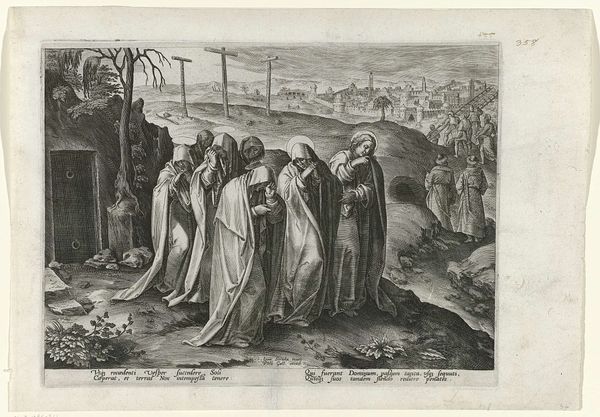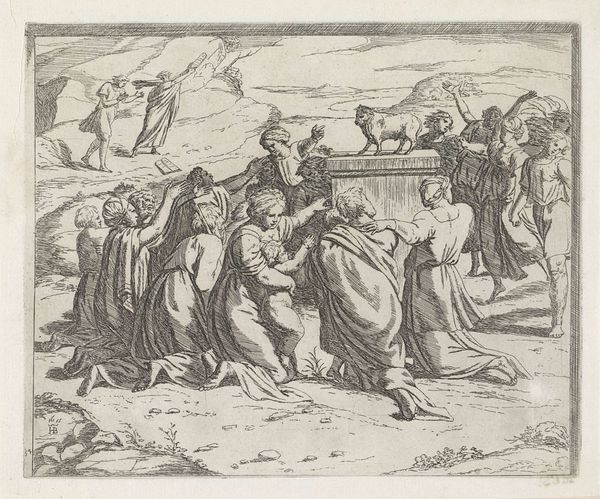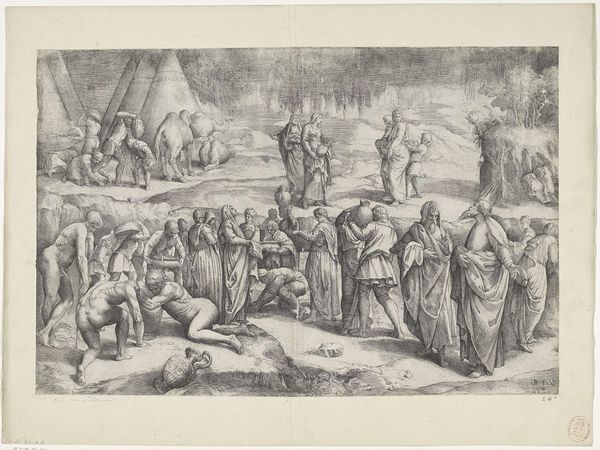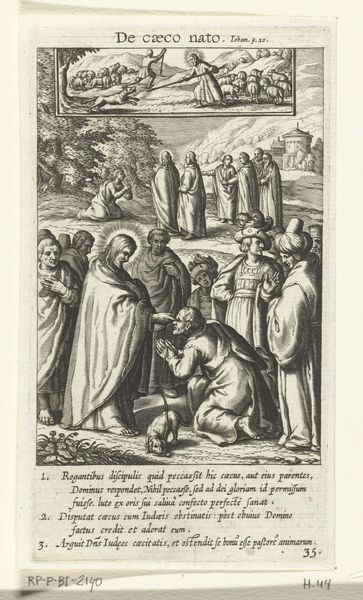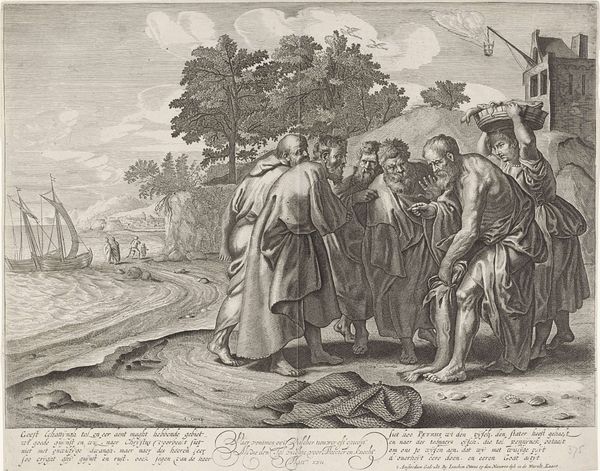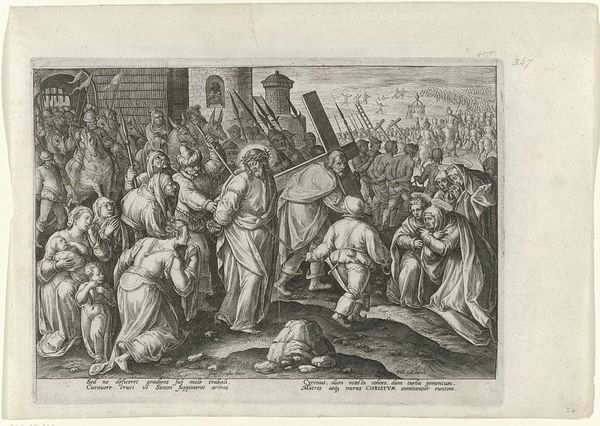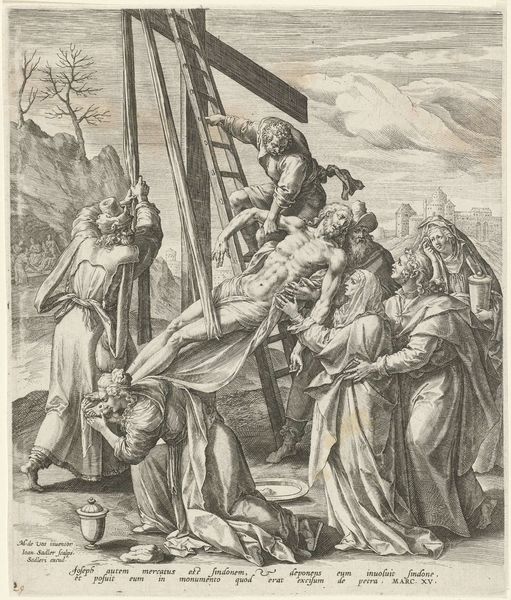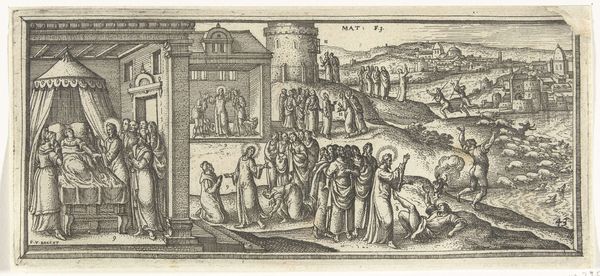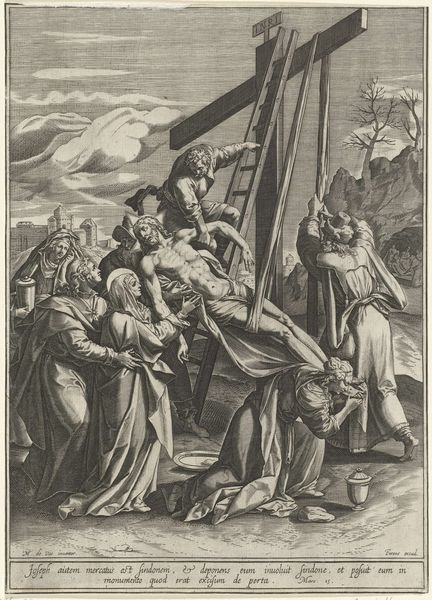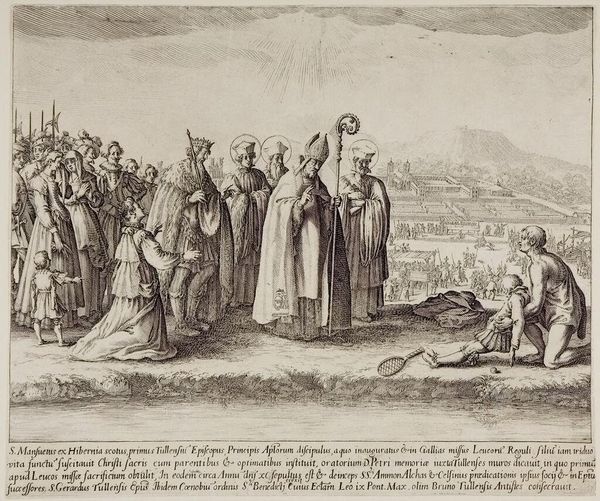
print, engraving
#
allegory
# print
#
mannerism
#
history-painting
#
engraving
Dimensions: height 194 mm, width 264 mm
Copyright: Rijks Museum: Open Domain
Curator: Jan Collaert the Younger's engraving, "Christus, gestorven aan het kruis" or "Christ Died on the Cross," from the late 1580s, dominates the wall here with its stark lines. What strikes you most? Editor: Immediately, the overt symbolism grabs me, but not in a calming way. There's a harshness, almost a didactic quality, to the visual vocabulary here. It feels intentionally unsettling. Curator: Collaert, steeped in the Mannerist style, often layers meanings within meanings. Look at the landscape behind the crucifixion, an elaborate Jerusalem juxtaposed with the graphic foreground of bones and a full skeleton. What continuity is created through that image? Editor: It's an almost blunt representation of mortality set against an enduring backdrop. I’m prompted to ask who this work might have served or appealed to and what power structures or specific cultural ideologies does the imagery subtly uphold, even if unintentionally? It's certainly not a neutral depiction. Curator: The symbolism isn't only focused on death. The palm tree behind Christ represents Christian martyrs and their victory over death, thus eternal life. It connects Christ's sacrifice to an established narrative of triumph in the face of persecution. Consider the repeated use of the skull in other contexts, as well as the location of Golgotha as “the place of the skull.” How does Collaert visually unite past narratives with the present suffering of Christ to construct a particular emotional response in the viewer? Editor: Exactly. It is constructed, undeniably. And the specific construction is what interests me. The intense grief of the figures clustered at the base of the cross is palpable, sure. But look closer: their exaggerated gestures, the way their bodies seem to almost theatrically contorted in anguish. To whose definition or standards of grief were they trying to perform or adhere? It almost cheapens genuine mourning into spectacle. Curator: And is that spectacle intentional? Or a symptom of its time? Religious art frequently uses such visual techniques to emotionally impact its intended audience. Editor: Precisely. Which also implies a need to actively dismantle such frameworks today when we interpret such potent visual legacies from history, since inherited traditions risk getting repeated even when they undermine equality. Curator: True. And these multiple frames of reference certainly underscore that art isn’t a passive reflection. Even in engravings meant for didactic purposes, these cultural conversations become essential. Editor: It allows a vital and ongoing engagement, even with such emotionally challenging subject matter.
Comments
No comments
Be the first to comment and join the conversation on the ultimate creative platform.
